Matador Network's Blog, page 1122
April 11, 2019
National parks will be free April 20
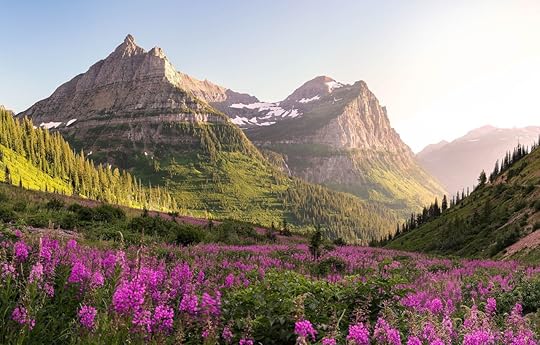
The snow is almost gone and the weather is warming up, so it’s time to get out in the wilderness in some of the country’s most beautiful national parks. To encourage people to make the most of spring and the long Easter weekend, the National Park Service is kicking off National Park Week on April 20, beginning with a free entrance day for all 418 national parks in the US.
As recommended by Will Shafroth, president of the National Park Foundation, visit FindYourPark.com (or EncuentraTuParque.com) to find parks near you and, once you’ve made up your mind on where you’ll be going, give the visitors center a call to learn about any special activities that may be scheduled, parking or transportation, and any other pieces of useful information to make your day at the park more enjoyable.
Since April 20 is also National Junior Ranger Day, it’s a great time to bring your kids along to enjoy the special programming. During the rest of National Park Week, each day is defined by a special theme; in addition to Junior Ranger Day there’s Military and Veterans Recognition Day, Earth Day, Transportation Tuesday, Wild Wednesday, Throwback Thursday, Friendship Friday, Bark Ranger Day, and Park Rx Day. To learn more about those themes, visit the National Park Foundation‘s website. 
H/T: The Points Guy

More like this: 5 underrated alternatives to America’s busiest national parks
The post All US national parks will be free on April 20 appeared first on Matador Network.

April 10, 2019
How to plan a winter trip to Banff
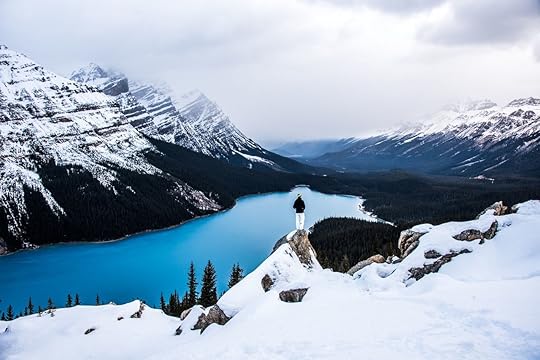
The jagged peaks and alpine lakes of Banff National Park fill 2,500 square miles of western Alberta. The area, which encompasses the towns of Banff and Lake Louise, along with three ski resorts and some of Canada’s most rugged backcountry terrain, is both surreal and irresistible. You could almost picture Frodo Baggins on his fantastic mission — traversing his way up and across the mountains, narrowly evading capture among the craggy pitches that stretch across the provincial border into British Columbia.
You can embark on your own enchanted journey here, stepping away into the solitude of North America’s most pristine wilderness, pack on your back and map in hand, and quickly escape from the grind of city life. The best time to do this is in winter when the road-tripping RVers and international sightseers have gone home, and in spring, before the hordes of tourists arrive and it’s still pretty much winter this far up north (there will still BE plenty of snow on the ground). The peace and solitude, coupled with the adrenaline of adventure, will hook you right away.
The area is the birthplace of Canadian mountaineering.
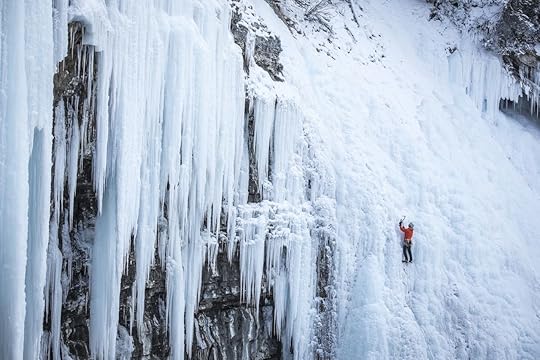
Photo: SkiBig3
Banff National Park, along with neighboring national and provincial parks, is part of a UNESCO World Heritage site — not only because of the area’s natural beauty but because of the living Columbia Icefield that continues to carve through the valley. A winter trip to the area gives you the chance to step into nature in much the same way the first-ever tourists did, working around Lake Louise on a snowshoe tour or donning a pair of crampons to trek up a snow-packed trail to the ice falls at Johnston Canyon.
Mountaineering in the Canadian Rockies was born of a necessity to climb, build, and develop the area during the construction of the Canadian Pacific Railway, a passion that quickly infused those passing through on the train. Construction of the railway, which began in 1881, was pivotal to the development of western Canada, and the Bow Valley in particular. Crews of workers from eastern Canada were unaccustomed to the harsh landscape and terrain of the high country, and building a functional railway over the mountains was a serious undertaking that required the import of experienced mountaineers from Europe.
“Us Canadians, we knew about snowshoeing and tapping maple trees, but we didn’t know about climbing mountains,” said Paul Lapierre, a backcountry guide at the Fairmont Chateau Lake Lousie.

Photo: Hue Chee Kong/Shutterstock
This changed with the arrival of Swiss mountain guides in the early 20th century. They were brought in by The Chateau to lead guests on guided expeditions into the backcountry. Guests would arrive by train in those days, often for an entire season in the park, the guides serving as their host to the area’s outdoor offerings.
Skiing first arrived with axemen working for the railroad during its early days. They used the old wooden planks to navigate the rugged terrain for work and hunting. By the mid-1890s, skiing began to find recreational footing inspired by Scandinavian ski jumping.
The first ski run in the valley was actually a ski jump erected on Tunnel Mountain in 1911, just outside the town of Banff. The town of Lake Louise, about 30 minutes north of Banff, is Canada’s highest permanent settlement, with just over 1,000 full-time residents, and nowadays, they can’t get enough of the backcountry.
The luxury hotels still embrace their backcountry roots.
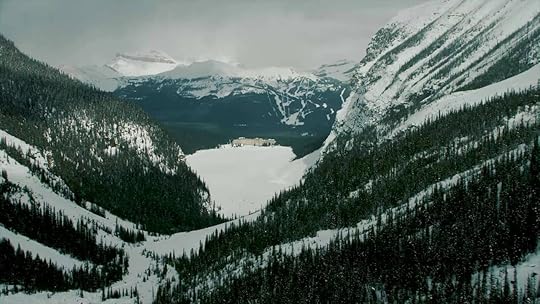
Photo: Fairmont Chateau Lake Louise/Facebook
The Fairmont Chateau Lake Louise is the dominant man-made structure of the northern Bow Valley, towering over the lake itself with Mount St. Piran, Devil’s Thumb, and Fairview Peak rising behind it. Upon first glance, the hotel looks like little more than a magnet for the Aspen crowd. Walk into the lobby and you’re immediately clutched by the arms of luxury. A grand chandelier dominates the pillared entryway, while boutiques slinging Gucci and Hugo Boss give way to large bay windows that reflect the bright tint of the lake just beyond the dining room of the Lakeview Lounge.
A closer look reveals a taste of the brand’s roots, a not-so-subtle nod to its guests that are actually here to get outside: the avalanche bulletin posted at the front desk, the enthusiastic chatter of seasoned mountaineers emanating from the Guide’s Cabin as they exchange tales of that morning’ excursion into the wilderness.
“The Chateaux was built for guides,” said Lapierre. In fact, it’s a symbol of high status for the guides to be able to call the hotel’s Guide Cabin their office.
The hotel’s guides lead visitors on excursions like snowshoe trips around Lake Louise and canoe tours on the lake itself. Much like the pioneers of Canadian mountaineering did a century ago, the hotel’s guides help the enthusiastic traveler access the park’s wilderness terrain. There are also extensively stocked outdoor gear and rental shops, which offer much more than the mass-produced and overused gear you typically find at most onsite rental shops.
The hotel as it stands today is a super modern version of what the Canadian Pacific Railway original had in mind. The original structure on the site was a log cabin erected “for (the) outdoor adventurer and alpinist,” says a quote on the hotel’s website. Stop by the Guide Cabin, a wood-lined room lined with topographic maps, in the back of the hotel to experience this first-hand. If Lapierre is around, ask him to take you out for a snowshoe up the side of Fairview Mountain.
The hotel’s dedication to its mountaineer roots, however, doesn’t change the fact that it costs a pretty penny — between 499 Canadian dollars (US$375) and CA$699 (US$575) for a standard room — to experience them. But for how hard you’ll strain your muscles out on the mountains, a nice hot soak and a gourmet dinner at the hotel afterward is sure to make you forget the strain on your wallet. Still, there are more affordable options for the backpacker set, such as the Samesun Hostel where you can snag a bed for about $25.
Skiing is the best way to experience the Banff backcountry.
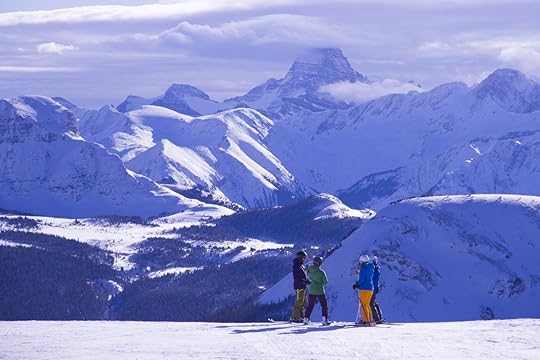
Photo: SkiBig3
Once you get out onto the powder, you’ll understand why so many backcountry hounds keep coming back to Banff year after year, despite a wide world of other mountain destinations. There’s just too much to explore, and even longtime locals like Roy Anderson readily admit they’ve barely scratched the surface of what the park has to offer.
“The problem with Banff is that once you taste the water, you can’t get away,” he said.
Anderson, a longtime conservationist, photographer, and former ski-jumper, has lived in the area since his family immigrated from Norway in the 1950s and has spent his life trekking the area on ski and on foot, usually with a camera in hand.
Ice climbing is also popular around the Victoria Glacier behind Lake Louise, as well as in Grotto Falls and the Junkyard, icefields just outside the park. But backcountry skiing is definitely the activity you can’t leave Banff without experiencing. In summer, these trails are well-trodden with day trekkers, but once the snow falls, the only noise you’ll hear is that of your guide calling out the next switchback.
“Here, it’s all about enjoying what the national park has to offer, as opposed to places like Whistler where there’s a zip line and all these other ‘adventure’ activities,” said Simon Moffatt, Sales and Marketing Director at Mount Norquay, which is home to the area’s first recreational skiing run built in 1926.
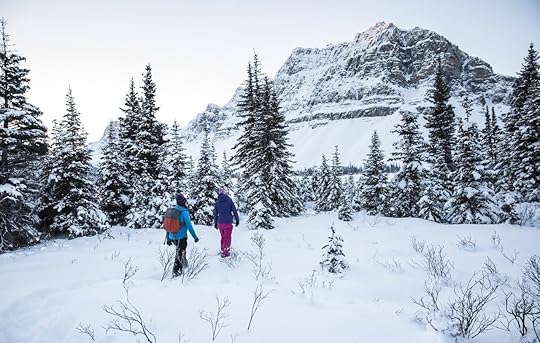
Photo: SkiBig3
For modern backcountry users, the legacy of the mountaineers lives on most noticeably at Sunshine Village, about 20 minutes outside of Banff proper. Here, experienced out-of-bounds skiers can access an exclusive part of the mountain dubbed the Delirium Zone, a gated-off section of the resort. Pass the beacon check at the top of the Great Divide Express lift and work through a steep hike toward a pair of peaks called The Eagles, and your reward is the “designated freeride zone.” That’s the resort’s term for this ungroomed, off-piste zone that offers dire consequences should one not be familiar with extreme terrain.
You must have proper avalanche gear and be familiar with how to use it, and be able to navigate past massive rock bands and long pitches of steep, but typically fresh and deep, powder fields. If you don’t have backcountry gear or a desire to drop into avalanche terrain, you can still look out over the freeride park by hiking five minutes up from the top of the lift to the access point.
The backside of Lake Louise Ski Resort is lined with steep, open bowls and hike-to terrain off the top of a POMA T-bar lift that locals have dubbed “The Summit Platter” after it’s round, dish-like seat. This in-bounds terrain off the 8,600-foot summit of Mount Whitehorn is essentially lift-accessed backcountry, though there is a backcountry access gate that drops skiers and boarders down to the peak. Here, you can hike or skin up the peak to access a number of steep, untracked lines.
SkiBig3, an organization working to promote the park’s three ski areas — Banff Sunshine, Lake Louise, and Mount Norquay — sells a lift ticket valid at all three mountains. Make it to all three and you’ve completed the Trifecta Challenge, rewarded by a commemorative plaque to take home.
Beyond the resorts, the national park offers backcountry users ample access to off-piste skiing and riding, available from multiple trailheads and access points throughout the park. The Association of Canadian Mountain Guides hires out guides to take visitors into the backcountry, an advisable way to go for first-time visitors unfamiliar with the terrain. Among the most accessible areas in the park is the trail to Skoki Lodge, a seven-mile skin from Lake Louise Ski Resort, which offers overnight accommodations and access to backcountry lines, some of which run down toward the base of the ski area.
Planning for the future of this increasingly popular park
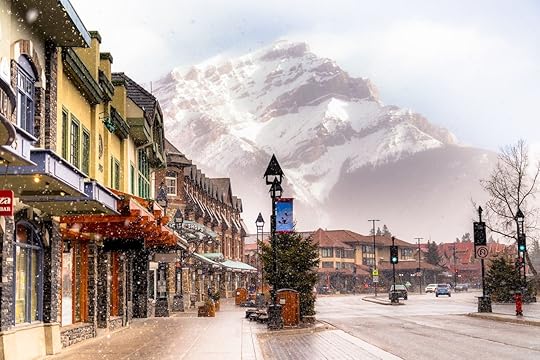
Photo: Aqnus Febriyant/Shutterstock
It’s easy to be tempted to put off a bucket list trip to Banff to the summer to see the glaciers and peaks in all their glittering glory, go for a hike or a paddle on the vibrant turquoise waters, and not be burdened by the challenges that harsh weather presents. But if you do, know that you’ll be joined by thousands of other summer roadtrippers and international tourists, who pack the two-lane roads and the trailheads rising away from them.
Over four million visitors come to Banff per year, up from just over 3.5 million only four years ago, and the vast majority come in summer. Choose to plan your trip around winter, however, and not only will you escape crowds and peak season prices, you’ll be helping preserve the park itself. Park regulators and longtime residents are working to address the ever-increasing numbers, looking to the models of US national parks like Yosemite for guidance. Many in the area believe that part of the solution to keeping the park from becoming overcrowded is to spread the visitors out throughout the year.
Another idea floating around is to build a modern train line from Calgary to Banff to reduce car traffic into the park. “That’s how the very first visitors came to Banff, back when it was called Station #8, and that may be how the tourists of the future arrive,” said Moffatt. Park regulators are also considering imposing tourist restrictions on some of the most popular sites, including Lake Louise, in an effort to both improve user experience and minimize negative environmental impact. None have been put in place yet.
Today, Banff National Park is home to over 10,000 people, most of whom live in the town of Banff. It has proven impossible to curtail certain aspects of commercialization and growth, but the town maintains strict regulations to make sure it remains the place that the cowboys and adventurers who put it on the mountaineering radar want to come to. Park restrictions prohibit anyone who doesn’t work in the park from buying a home within its boundaries. In an effort to address the affordable housing issues that plague mountain towns across North America, both Fairmont hotels in the park offer extensive employee housing complexes, and the town itself is working to offer the same.
It’s during winter that these park workers, guides, and town locals will be happy to see you, when they aren’t so beleaguered from busloads of tourists stomping all over their park. Because the winter belongs to the true outdoor enthusiasts, who choose to brave the elements so that they can experience the snowy mountains at their most majestic, the way the first mountaineers did not so long ago. 

More like this: Ski resorts across North America are finally opening up their backcountry
The post Why Banff should be the base for your next backcountry adventure appeared first on Matador Network.

JetBlue cheap flights to London

Flying across the Atlantic from New York City and Boston is about to become much easier. JetBlue, already a favorite among East Coast travelers for domestic flights, announced Wednesday that it plans to launch direct flights from both cities to London, England, in 2021.
The airline plans to fly the Airbus A321LR, a long-range plane built to be both comfortable and efficient for long hauls, on the route from both cities. While it already flies throughout much of North, Central, and South America, this announcement signals JetBlue’s first venture across the pond.
The airline must first undergo Extended-range Twin-engine Operational Performance Standards (ETOPS) compliance verification before service can commence. This certification can’t take place until the fulfillment of JetBlue’s order from Airbus, meaning it looks to be a while before we have a set date for the first flight and tickets go on sale.
Still, the announcement is reason for fans of the low-cost carrier to celebrate. Google Flights shows the current low price for a flight from New York to London at $365 one-way. JetBlue has a history of driving down costs on competitive routes, and Skift reported on Wednesday that its lower-priced premium cabin could disrupt the current status quo on the nation’s three biggest airlines — Delta, United, and American — who currently fly the same route.
Aiming to corner the market with its signature Mint premium seating options, JetBlue promises to price business class seats far lower than most options currently available by airlines already flying these routes. “I looked at some legacy brands and what they were charging a week out for business class between London and New York and it is obscene..eight, nine or ten thousand dollars,” CEO Robin Hayes told the London Aviation Festival last year. “And, when we see that, we know that we can do that a lot cheaper.” 
H/T: Airfare Watchdog

More like this: Overhead bins are getting a makeover and it may cost you
The post JetBlue to launch London service from New York and Boston appeared first on Matador Network.

The most Soviet-looking cities
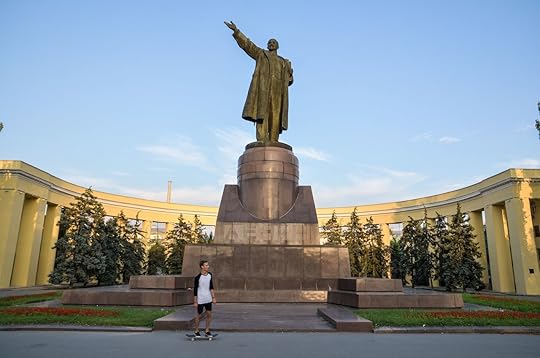
Almost three decades have passed since the day the Soviet flag was lowered for the last time over the Kremlin in Moscow, but the shadow of the Union still looms in many remote corners of former socialist states. Following the resignation of President Mikhail Gorbachev on December 25, 1991, the transcontinental superstate that extended from the Black Sea to the Far East broke up into 15 new countries ready to reestablish their identity as independent nations. But even today, there are areas of the ex-USSR that appear to have remained stuck in time, offering a glimpse into Soviet life through tall standing statues, utilitarian architecture, and a seemingly endless number of Lada cars. Monuments dedicated to Lenin, Marx, and other Communist idols still abound in Putin’s Russia, and even when the propaganda is not so evident, concrete towering blocks and the occasional hammer and sickle give an idea of what living under the rule of the Politburo felt like. Here are seven post-Soviet cities that will bring you back to the red era.
1. Murmansk, Russia

Photo: Angelo Zinna
A 30-hour train ride from Moscow takes you all the way to Murmansk, the largest city in the Arctic Circle, with a population 300,000. Upon arrival, you will be greeted by a red star peeking up toward the sky on top of the train station, and while walking toward the city center via Lenin Street, an odd collection of Soviet-era plates, statues, and busts will welcome you into this frozen (literally) city of concrete. It is right on the water that you will find one of the symbols of the Soviet era, the first nuclear-powered icebreaker ever built in 1957. The Lenin ship today has become a museum, but Murmansk remains the base of the Atomflot Federal State Unitary Enterprise, the fleet of Russian nuclear vessels used to cross the Arctic.
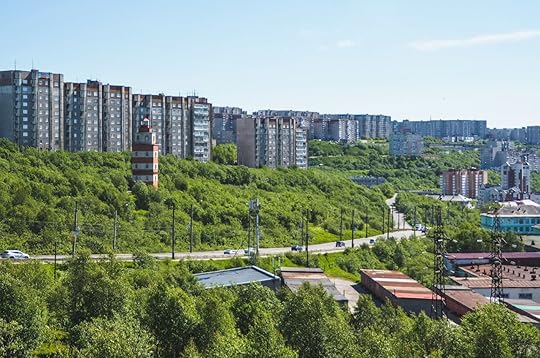
Photo: Angelo Zinna
During the winter, the sun never rises in Murmansk and temperatures stay well below zero, but in late spring the Kola Peninsula comes back to life and the hills surrounding the city turn bright green — a pleasant contrast to the infinite row of gray apartment blocks that surround the town center together with the Alyosha Monument, the 116-feet concrete statue built in memory of World War II fighters.
2. Tiraspol, Transnistria

Photo: Angelo Zinna
Even though it has its own currency, parliament, football federation, and army, Transnistria does not officially exist in the eyes of the international community. Recognized as a sovereign state only by Abkhazia, Nagorno-Karabakh, and South Ossetia, the self-governed territory refused to detach itself from Moscow when Moldova declared its independence. The desire for autonomy led to the 1990-1992 civil war, which ultimately resulted in the breakaway nation proclaiming itself a republic without the approval of any UN member state. Located between the Dniepr River and Ukraine, Transnistria vaunts its Soviet roots in every way possible. Its red flag still carries a hammer and sickle, military tanks are placed on pedestals throughout the city, and a heroic Lenin stands tall in front of Tiraspol’s parliament building.
While Transnistria has been a closed-off territory accused of human and arms trafficking and money laundering, today it’s safe to visit. Tiraspol is accessible from both Moldova and Ukraine, with minibuses traveling from Chisinau and Odessa. No official border exists, but the ill-famed checkpoints are obligatory stops to obtain the access permit — a flimsy square of paper that you should be careful not to lose. There is no set rule about how many days you’re allowed to stay in Transnistria, however, the country appears to be opening up to tourism, giving three, five, and even 10-day permits.
3. Kharkiv, Ukraine
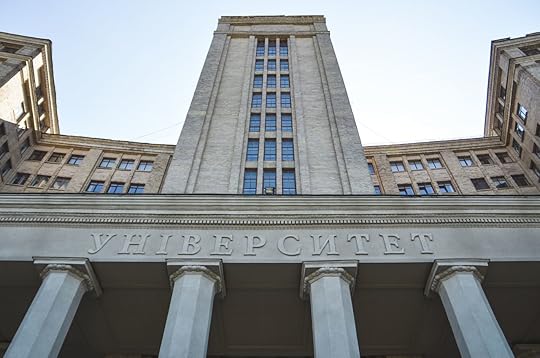
Photo: Angelo Zinna
A brutalist wonderland located just below the Russian border in northeastern Ukraine, Kharkiv (or Kharkhov, in Russian) is a sprawling city of large squares, large roads, and unique architecture. Until 1934 the city was the capital of Soviet Ukraine, and although it may appear hostile at first sight, both because of its dramatic urban landscape and its military-inspired monuments, Kharkiv is a lively city of hidden bars and a diverse student population.

Photo: Martyn Jandula/Shutterstock
After Freedom Square, one of the largest city squares in Europe, the most impressive sight in Kharkiv is the Derzhprom, the Palace of the Industry. The monumental building opened in 1928, meant to house the governmental bodies before they relocated to Kyiv (Kiev in Russian), and is a precursor to the Brutalist movement. The structure comprises of small concrete and glass skyscrapers (five to 10 stories high) interconnected by bridges of the same materials. A statue of Lenin used to be placed in front of the entrance, however, it has been demolished as most monuments of the Communist leader in Ukraine have been.
4. Minsk, Belarus
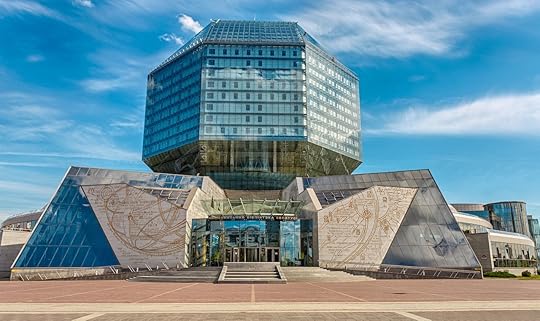
Photo: BAHDANOVICH ALENA/Shutterstock
For many years, obtaining a tourist visa to enter Belarus was a hassle for Western tourists, but recently the country seems to be opening up to foreign visitors by loosening regulations. Isolation has preserved the Soviet identity of Belarus, and reaching Minsk can feel like traveling back to a time of monumental architecture, surreal war memorials, and wide open roads.

Photo: Curioso/Shutterstock
During the Great Patriotic War, the Nazis had completely destroyed Minsk, decimating the population and obliterating most of its urban landscape. Once the Red Army liberated the city in 1944, the plan to move the capital to Mahiliou was abandoned in favor of a major renovation program that transformed Minsk in the city that we see today. From the old KGB headquarters to the classic Soviet metro station and the enormous Independence Square, Minsk pays tribute to the Soviet aesthetics in every corner of the city.
5. Gori, Georgia

Photo: Felix Lipov/Shutterstock
Although Georgia is trying very hard to come closer to Europe and leave behind its Soviet past, the birthplace of Joseph Stalin is still an attraction for those seeking to know more about the origins of the Bolshevik movement. Gori is found about 50 miles west of the capital city of Tbilisi and offers a glimpse into the Caucasus’ red past.
The 20-foot-tall statue of the Soviet dictator that stood in front of the municipal building was removed in 2010 along with many other Communist symbols around the country, but the house where Iosif Jugashvili, Stalin’s real name, lived still stands as a mausoleum in front the large museum complex dedicated to him. Gori today is a quiet town surrounded by arid hills, however, it still carries the scars of the Russian-Georgian conflict of 2008. Bullet holes are still visible on the facades of the buildings on Stalin Avenue, the main avenue in the center of Gori.
6. Volgograd, Russia
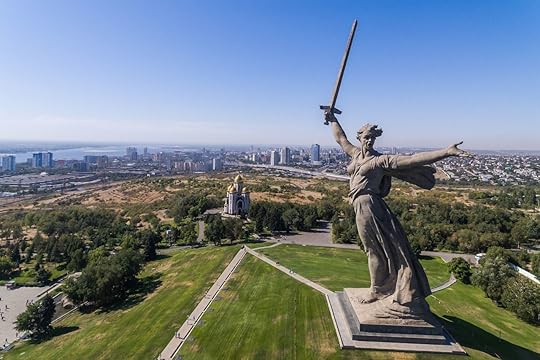
Photo: Oleg Dimitrov/Shutterstock
Located in the heart of western Russia on the banks of the Volga River, the industrial city of Volgograd has changed its identity three times over the course of the last century. Known as Tsaritsyn until 1925 and as Stalingrad until 1961, Volgograd is remembered mainly for its role during World War II. In the summer of 1942, the Red Army managed to stop a German attack after the city had been almost entirely destroyed, turning the war around in favor of the Allies. Following the Battle of Stalingrad, the city was named Hero City of the Soviet Union, and a massive memorial complex was built on Mamayev Hill, overlooking the newly erected skyline.

Photo: Angelo Zinna
The Motherland Calls is said to be the tallest statue of a woman in the world, at a height of 172 feet. An eternal flame at its feet is constantly guarded by armed police. Volgograd is also home to what is believed to be the tallest statue of Lenin on the planet, with its imposing height of 187 feet.
7. Bishkek, Kyrgyzstan

Photo: Oleg Dimitrov/Shutterstock
The grid-shaped capital city of land-locked Kyrgyzstan stands in stark opposition to the natural beauty that surrounds it, with the Issyk Kul, the second largest alpine lake in the world, and the Tien Shan mountains just a few hours’ drive away. Before the collapse of the USSR, Bishkek was known as Frunze, the name of a r evolutionary and Red Army leader, and was built as a utopian architectural experiment made of lush gardens and modernist buildings. One of the most prominent examples of this visionary urban planning is the State History Museum, built in the main square of Bishkek with its block-like shape — but it doesn’t take long to come across other fascinating structures from the past century, such as the striking Stalin-era White House or the iron and concrete Sports Palace. 

More like this: Indulge your Soviet curiosity in Stalin’s secret printing house in Tbilisi, Georgia
The post 7 places where it feels like the Soviet Union never collapsed appeared first on Matador Network.

First photo of black hole viewable

Everyone has seen black holes represented on television, or in educational science specials, but their composition and appearance have largely remained a mystery to the general public. Now, however, the first direct visual evidence of the existence of black holes has just been released by researchers. A massive black hole, encircled by a ring of light, was photographed in a galaxy called Messier 87, about 55 million light-years from Earth. Sheperd Doeleman, director of the Event Horizon Telescope (EHT) collaboration, said in a news conference, “We have seen what we thought was unseeable. We have taken a picture of a black hole.”
The black hole was captured by the EHT, and the project involved over 200 researchers working for more than a decade. Scientists used eight radio telescopes stationed around the world, all working together, to create an extremely powerful virtual telescope. Daniel Marrone, associate professor of astronomy at the University of Arizona, said, “The observations were a coordinated dance in which we simultaneously pointed our telescopes in a carefully planned sequence.” The array of telescopes collected 5,000 trillion bytes of data over two weeks, which ultimately produced the black hole images.
This particular black hole has a mass 6.5 billion times that of our sun, and researchers believe it may be the largest black hole viewable from Earth. Finally having a clear visual of a black hole is an important confirmation of Einstein’s theory of general relativity, in which he predicted that dense regions of space have such intense gravity that nothing would be able to escape them.
Black holes have an abyss so dark and a gravitational pull so strong that not even light can escape it. For their strange and powerful qualities, they have captured widespread public interest for years. According to France Córdova, director of the National Science Foundation, “Black holes have sparked imaginations for decades. They have exotic properties that are mysterious to us. Yet with more observations like this one, they are yielding their secrets.” 
H/T: The New York Times

More like this: 6 space travel projects that will become a reality in our lifetime
The post This is the first-ever photo of a black hole appeared first on Matador Network.

Best restaurants in Asheville

You’d never guess that Asheville, North Carolina, has a population of under 100,000 by the way people talk about the city’s food and drink scene. It’s packed with the most breweries per capita in the US, local chefs are regularly nominated for — and win — James Beard Awards, and a vibrant downtown plays to just how much the masses like to eat and drink.
“For the size of the city, the quality is pretty amazing,” Patrick O’Cain, owner and chef at Gan Shan Station and Gan Shan West, said. “Asheville is a destination in and of itself, and is elevated by the food that is here. It’s hard to define Asheville in terms of just restaurants. Really, it is the scene as a whole that makes it so special and, yes, restaurants play a part of that, but so do makers, breweries, and farmers.”
Asheville’s position in the Blue Ridge Mountains gives chefs easy access to agriculture, while its vibe encourages authenticity and creativity. The city has room for and can support restaurants focused on Southern food, naturally, but also on Central and South American food, Korean, and Ethiopian. It can even support cocktail-focused restaurants like Sovereign Remedies.
“There are places that are ‘hot’ in Asheville, but it is not necessarily a trendy food city,” Kevin Westmoreland, owner of Chestnut and Corner Kitchen, said. “It is one that is populated with restaurants that really care about the authenticity of the food and handcrafting with local ingredients. It’s more of a ‘we are in it for the long haul’ kind of place.”
To eat the best of the best, you have to look to the chefs. We caught up with O’Cain, Westmoreland, Graham House (executive chef at Sovereign House), and Joe Scully (owner and chef at Chestnut and Corner Kitchen) to learn more about where, when, and why people should be excited about eating in Asheville.
What type of food does Asheville do best?

Photo: Andrew Thomas Lee for Gan Shan
“Many restaurants in Asheville have Southern dishes on their menus, even if they are not decidedly ‘Southern’ restaurants,” Westmoreland said. “You can get great fried green tomatoes, chicken and waffles, shrimp and grits, biscuits and gravy, fried okra, and other signature Southern dishes with wonderful spins on flavor in Asheville.”
It’s not all Southern, though. “There is a lot of diversity in interest around food so a little bit of everything can exist here and do well,” O’Cain said. “We see that all over — Spanish tapas, New American, Italian, regional Southern, Mexican, Asian.”
Part of that diversity comes down to the chefs in the city, but part of it is also thanks to the diversity in agriculture in the area.
“With our incredible agriculture here with so many microclimates,” House said. “I think the best food you will find here is anything that involves the fresh fruit and produce that does so well here.”
Where do you eat on your day off?

Photo: Cúrate/Facebook
“If I want a relaxed place, Village Wayside,” Westmoreland said, and Curate for more of an uptown feel.
“We have so many wonderful options and try to support as many local joints as possible,” Scully said, listing Taco Temple, Limones, and Baba Nahm among his favorites. Both O’Cain and House favor All Souls Pizza and Taqueria Munoz, while other restaurants that make the chefs’ day-off eating list include All Day Darling, Rocky’s Hot Chicken, Table, Chai Pani, Rise Above Deli, 828 Family Pizza, and Copper Crown.
Who are the chefs in the city that people should keep an eye on?

Photo: Zambra/Facebook
“Michael Hartlove, who has been the sous chef at Table restaurant,” O’Cain said. “He’s put together a pop-up series called the Grazing Camel that is the last Sunday of every month from March through May. His food is super exciting and I can’t wait to see where he lands permanently.”
Scully suggested keeping up with what Ryan Kline of Zambra is doing, and House mentioned Dan Sylo from Sawhorse.
In terms of chefs opening up new restaurants, Josh Weeks comes to mind for Westmoreland. “He was the sous chef/executive chef for Corner Kitchen for over a decade, is self-taught, and has among the best skills with flavors of anyone in the city,” Westmoreland said. “He is opening a new restaurant in Waynesville, which is just a hop, skip and a jump from us.”
When is the best time of year to eat in Asheville?

Photo: MilesbeforeIsleep/Shutterstock
When it comes to ingredients, Asheville is bountiful from May through the fall. “The bounty of what is available from our local farms is pretty amazing,” O’Cain said. “Those are the simplest seasons of cooking, where we have very little manipulation and can allow the ingredients to shine.”
During those months, restaurants can self-forage and source from local farmers and foragers. Or, as Scully put it: “It’s a feast.”
If you want to make sure you get a seat when you want it, though, “come from January to April,” Westmoreland said. “You can have the city a little bit more to yourself during those months.” 

More like this: 8 places that prove nowhere in the US does breakfast like Asheville
The post How to eat like a chef in Asheville appeared first on Matador Network.

Gardening can help you be healthier

If you’re one of those people who’s always postponing your gym sessions, now you may actually be able to postpone them indefinitely. According to a new study conducted by researchers around the world, “leisure time physical activity” can actually be a great substitute to the dreaded leg day, or an hour on the treadmill. “Leisure time physical activity” can include a wide range of activities, like gardening, dancing, and even just going for a walk. Compared to a sedentary lifestyle, doing these activities for just 10 to 59 minutes a week was proven to lead to an 18 percent lower risk of all-cause mortality — including cardiovascular disease and cancer.
The study took place over 11 years, involved nearly 90,000 participants, and used data from 12 National Health Interview Surveys organized by the Centers for Disease Control and Prevention.
The idea that gardening could be linked to health benefits isn’t a revolutionary idea. Previous studies have found that gardening is associated with a decrease in depression, anxiety, and body mass index, along with increases in quality of life, life satisfaction, sense of community.
While gardening might be a solid gym substitute in the spring and summer, however, you’ll need to find another “leisure time physical activity” to keep yourself occupied during the cold winter months. 
H/T: Travel & Leisure

More like this: How to stay committed to your health and wellness goals while traveling
The post Ditch the gym: study shows that gardening can keep you healthy, too appeared first on Matador Network.

Mary Berry hosting an afternoon tea

Afternoon tea is a quintessential British experience, but sharing the mini sandwiches and pastries with beloved Mary Berry — the TV personality known for judging The Great British Baking Show — has to be almost as good as sharing crumpets with the Queen. In partnership with excursions company Belmond, Berry is hosting an afternoon tea train ride from Victoria Station in London through the picturesque Weald of Kent in the southeastern corner of the country. The four-hour round-trip journey through this area of woods and valleys won’t take place on just any commuter rail, but on a British Pullman train from the ‘20s.

Photo: Belmond British Pullman/Facebook
Before the journey begins, Berry will host a meet and greet at the train station in London, followed by guests boarding the train and embarking on a classic and elegant afternoon tea experience.

Photo: Belmond British Pullman/Facebook
According to the website, guests will be invited to “Admire the intricate art deco features of your carriage, including handcrafted marquetry, gleaming crystal and silken lampshades. Soon you will be served an indulgent spread. Savour a selection of Mary Berry’s favourite cakes and desserts, tea or coffee and a glass of sparkling wine.” Additionally, guests will receive a gift from Berry herself.
The tea train rides run on May 3 and May 4, with tickets starting at around $391 per person. 
H/T: Food & Wine

More like this: The 11 most beautiful train stations around the world
The post Have tea and scones with Mary Berry on a train ride through the English countryside appeared first on Matador Network.

How to keep houseplants alive

Houseplants have been in the news a lot lately, from being the chosen “children” of millennials to their roles in healthy household experiments. Not only can houseplants purify the air and improve physical health, but they can also improve happiness and mental well-being. Even NASA, which has studied the power of plants to purify air indoors, recommends having at least one plant per 100 square feet of home. If you can commit to finding the right light and soil for your plants and establishing a routine for them, there are many plants that are good options for people who aren’t home a lot. If you would like plants for a happy, healthy home but are concerned with caring for them, here are nine plants you can keep alive even if you travel a lot.
Author’s note: The vast majority of houseplants are toxic to pets. If you have pets, be sure to choose the correct plants for your household.
1. Cactus

Photo: panattar/Shutterstock
These drought-loving succulents native to deserts in the Americas are an obvious place to start. They are hearty, drought-resistant and, provided they are planted in proper sandy soil, can be very low maintenance. Small barrel cactuses can add beauty to a room without taking up too much space but if you are looking for a statement piece, mature cactuses can be procured from reputable nursery growers. Because cactuses grow slow, be prepared to spend a pretty penny on larger specimens. Not restricted to horizontal surfaces, hanging cactuses are also good options, with the golden orchid or rat-tail varieties also being very easy to care for. With the right soil and light, many cactuses can go without water for weeks at a time. Cactuses are good options if you have pets as most feature sharp spines that will deter critters from attempting to play with, or chew on, these plants.
2. Aloe

Photo: AHatmaker/Shutterstock
Known for the healing gel contained within its leaves, the spiny aloe vera is a beautiful, decorative plant that is very easy to care for. Aloe can grow very large but does not need to be repotted often, and can also be put outdoors if you live in a warm enough climate. Planted in proper sandy soil, it thrives when allowed to dry completely between waterings, which, depending on the aridity of your location, can be every two to three weeks.
3. Jade plant

Photo: Nat Vilman/Shutterstock
Jade plants are famously easy keepers, so much so that they often outlive their owners. Though they can grow large, they tolerate being root-bound well and therefore, do not need to be repotted often. Repotting is necessary for those who would like a larger plant, but keeping a jade plant root-bound can keep it small if that’s what you prefer. One of the cool things about these plants is that you can propagate them through their leaves. If one falls off, just stick it back in some dirt and hope it takes root. Water is stored in their thick leaves, so they can go for a time without watering once you have established a schedule. In drier climates, watering might be once a week while in more humid areas, watering might be once a month; the plant will let you know.
4. Philodendron

Photo: saam3rd/Shutterstock
Heart-leaf philodendron is a favorite houseplant because it grows fast and is nearly impossible to kill. Because they grow so fast, they make for great hanging plants, which is also important if you have pets because philodendrons are poisonous to pets. As with most plants, a watering schedule should be established based on the aridity of your home — in drier locales, plants will benefit from more frequent watering. The heart-leaf philodendron is also one of NASA’s “clean air plants,” meaning it removes toxins from the air, specifically formaldehyde, which can be found in home insulation, carpeting, pressed woods, and even the paper towels and cleaners you use in your home.
5. Mother-in-law’s tongue/snake plant

Photo: Myroslava Bozhko/Shutterstock
The sansevieria is a succulent that doesn’t mind being pot-bound and thrives on being ignored, making it a perfect choice for travelers. The mother-in-law’s tongue variety typically has long leaves bordered in yellow, while the snake plant variety has dark green bands on its leaves. First cultivated in China, the sansevieria has a long folk history of bestowing good luck upon its keepers and is also a NASA-favored plant for its ability to remove both formaldehyde and benzene from the air. It’s a plant that looks pretty, is easy to care for when you’re away for long stretches, and actually helps make your place healthier.
6. Spider plant

Photo: TYNZA/Shutterstock
Originating in South Africa, the tough spider plant is extremely easy to grow, care for, and propagate. Spider plants aren’t picky about conditions, though they prefer cooler temperatures and indirect light, and do well when allowed to dry out between waterings. In fact, too much water can cause root-rot in spider plants, which is one reason they can be good plant companions for frequent adventurers. They make great hanging plants as their long “spiderette” pups can be cut and easily propagated.
7. Money tree

Photo: priyadarshini_s/Shutterstock
Most easily identified by its braided trunk, the money tree is believed to bring good luck and financial success. If you travel a lot for work, this might just be the plant for you. Money trees prefer indirect light, sandy soil, and a well-draining pot. If you can provide these, money trees need regular water but not too much, as they tend to suffer from root rot. One trick to help with humidity but avoid over-watering is to let the soil dry out between waterings but once watered, provide a pebble tray to bring humidity to the plant. Just fill a shallow plant tray with pebbles, add water to halfway cover the pebbles, sit the plant on top, then start packing for your trip.
8. Cast-iron plant

Photo: mizy/Shutterstock
This slow growing plant can handle just about anything: low light, high light, and even extreme temperatures. It’s also drought-tolerant, which makes it a great choice for travelers. It’s not the most exciting of houseplants but its dark green leaves can add some life and color to any home — even one without you in it for extended periods. Though the cast-iron plant is a native of the lily family, it is non-toxic to dogs and cats so it isn’t a worry to have out with bored pets.
9. Rubber plant
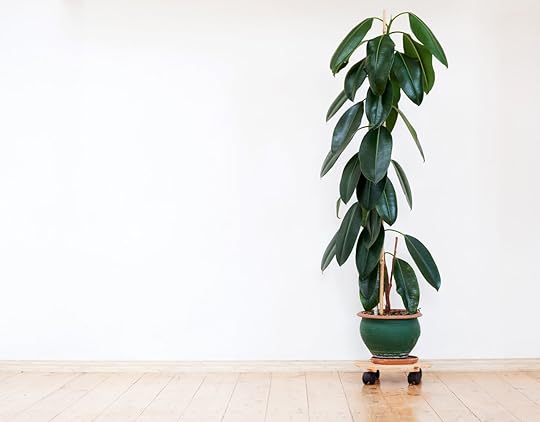
Photo: Meissa Nagy/Shutterstock
This species of ficus likes to show off — its large leaves change color with the amount of light it receives, more light exposure encourages deep burgundy leaves that revert to green in low-light conditions. They can be kept small in a small pot or allowed to grow into a tree if potted in a larger pot. Rubber plants like to dry out between waterings but do require more attention during the summer growing season, which includes more frequent watering and misting or wiping the large leaves with a damp cloth. If you can commit to one season of intensified care, you’ll have a happily low-maintenance plan during the other three. 

More like this: The 7 most fascinating flowers around the world you need to see in person
The post The 9 plants you can keep alive even if you travel a lot appeared first on Matador Network.

How to volunteer abroad

Signing up for an overseas volunteer program is one of the best ways to see the world when you’re young: You can travel, learn new skills, and make a meaningful contribution to global society. But before you go running off to be the change you want to see, there are some important things to consider before taking part in a volunteering abroad program. Here’s a guide that will help you make sure you have all your boxes ticked before setting out.
Figure out what kind of volunteer work you want to be involved in.
Decide where you want to volunteer.
Double-check the fine print.
Consider your motives for volunteering abroad.
Evaluate the costs.
Know how to prepare and what to pack.
1. Figure out what kind of volunteer work you want to be involved in.
Volunteer abroad programs are a huge industry: More than 1.6 million people volunteer abroad every year, and that number is ever increasing. For young adults who want to both see the world and help others, an easy option is to take part in a “voluntourism” program, where in addition to their volunteering work, participants still get some free time for travel and cultural enrichment.
Luckily for all you do-gooders, there is an overload of programs out there, and you have your pick of an area of expertise. Teaching English, construction, disaster aid, agriculture and food work, childcare, and habitat or wildlife conservation are just some of the fields in need of volunteers. Mission programs, offered through community churches and organizations, are also very popular. If you have a more specialized background, like in the medical field, there are also many programs for that frequently in-demand skill set.
2. Decide where you want to volunteer.
Every year there are different countries that, for reasons ranging from the number of available programs, cost, and safety, become popular volunteer destinations. Last year’s top spot was Peru; India, the Philippines, and Cambodia are also frequently popular destinations. So if it’s about wanting to visit a specific country, you can tailor your search around that.
Or say you’re more attached to the “what” you want to do instead of the “where.” If you want to volunteer in wildlife conservation, countries like Thailand and Costa Rica continually top the list for conservation volunteer programs. If you like working with kids, countries like South Korea and Chile are always looking for native English speakers to volunteer in schools.
But there are other questions to bear in mind, such as how far outside your comfort zone you’re willing to push yourself. Volunteering abroad is all about cultural immersion, but it’s not always easy. You can struggle with culture shock or may have to learn to live without easy access to things we take for granted, like fresh water and electricity. But that is a key part of the experience, requiring you to take a step out of your bubble and experience an alternate way of living.
3. Double-check the fine print.
This point cannot be stressed enough: know what you’re getting yourself into. There are thousands of volunteer abroad programs around the world, and they run the gamut from huge corporations to small nonprofits. So it’s up to you to do the research and pick the best program that will have the most ethical and positive impact.
In general, you want a program that has a proven track record. It should be transparent and upfront about how the money is spent, it should be helping its volunteers through every step of the process, and it should have good feedback from past participants. It’s easy to find such feedback from an online search or reaching out to people who have participated in a certain program in the past. A great example is Global Volunteers, which has been operating since 1984, is run by the UN, and has a stellar record.
On the opposite end of the spectrum, there are many “volunteer programs” that are just in it for the money or the publicity, including many programs centered around orphanages. Do your due diligence, and steer clear of unvetted programs and programs that have had doubts raised about their legitimacy by outside organizations.
Also, know the particulars of the program you signed up for to fully understand what is included and what isn’t: the cost breakdowns, the schedule, what you need to bring, and what is provided. Otherwise, you may find yourself in a foreign country facing some unexpected surprises.
4. Consider your motives for volunteering abroad.
Apart from choosing the right program to volunteer with, doing some self-reflection to make sure you’re doing this for the right reasons is arguably the most important part of the process. There can be a lot of assumptions, unacknowledged privileges, and stereotypes hiding behind a desire to volunteer abroad. Asking ourselves key and perhaps uncomfortable questions can force us to examine our choices and perspectives, and make sure our decision to volunteer abroad is actually doing good for others.
5. Evaluate the costs.
Volunteering to help others is a worthy cause. But unfortunately, that means programs do not always come cheap. Most of the expenses, such as airfare, housing, and food will need to be covered by you.
Where your money goes really depends on the program. Some just charge an upfront fee to participate and then leave figuring out the logistics, like housing and transport, to you. Others have those costs built into the overall price and they arrange everything for you in advance. If it’s your first time living abroad on your own, it may be best to choose a program that makes those arrangements for you. But either way, since you’ll be volunteering and not working during the program, you’ll want to have a nest egg saved so you’ll have money while abroad, either from work, fundraising, or asking for donations from friends and family.
6. Know how to prepare and what to pack.
Most past participants and programs themselves recommend that you pack light. What exactly you pack depends on where you’re going, but in general, some good sturdy shoes, all-weather clothing, toiletries, and personal hygiene products (especially feminine hygiene products) should be included, as well as any medication you may need.
In terms of preparation, most organizations will send you literature prior to your trip that contains relevant information about culture, customs, language, dos and don’ts, and more. But you should do some of your own research before departure, especially learning some of the basics of the native language. You’ll likely be speaking English within your volunteer group and at your volunteer job, but speaking the native language with the locals can help you communicate better, as well as show respect and that you have an interest in their culture and language. 

More like this: 7 sustainable volunteer trips you can actually take the family on
The post What you need to know before volunteering overseas appeared first on Matador Network.

Matador Network's Blog
- Matador Network's profile
- 6 followers



